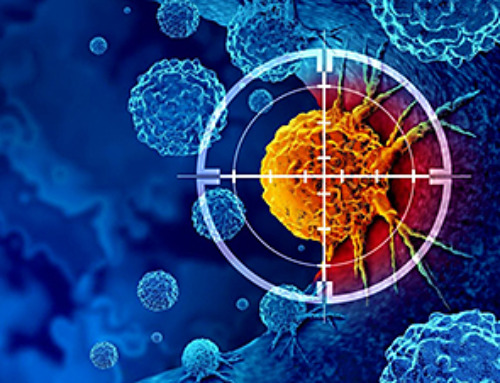A team led by Jose Onuchic at Rice University and Paul Whitford at Northeastern University, both researchers at the National Science Foundation Physics Frontiers Center at the Center for Theoretical Biological Physics (CTBP) at Rice, has made a discovery in the fight against severe acute respiratory syndrome coronavirus-2 (SARS-CoV-2), the virus responsible for COVID-19.
The team, in partnership with an experimental effort led by Yale University researchers Walter Mothes and Wenwei Li, has uncovered new insights into how the virus infects human cells and how it can be neutralized. Their findings were published in the journal Science on Aug. 15.
SARS-CoV-2 uses its spike protein to attach to the angiotensin-converting enzyme 2 on human cells, initiating a process that allows it to enter the cell. The spike protein has two main parts: the S1 domain, which varies greatly among different strains of the virus, and the S2 domain, which is highly conserved across different coronaviruses. This similarity makes the S2 domain a promising target for vaccines and therapies that could work against many virus strains.
By combining simulations and theoretical predictions with structural information from their experimental collaborators, including initial and final configurations as well as intermediate states during the viral invasion, the researchers obtained a detailed picture of the infection process at an atomic level.
“Understanding these intermediate states of the spike protein creates new opportunities for treatment and prevention,” said Onuchic, the Harry C. and Olga K. Wiess Chair of Physics, professor of physics and astronomy, chemistry and biosciences and co-director of CTBP. “Our work demonstrates the importance of combining theoretical and experimental approaches to tackle complex problems such as viral infections.”
Using an advanced imaging technique called cryo-electron tomography, the experimental researchers at Yale captured detailed snapshots of the spike protein as it changes during the fusion process.
They discovered antibodies targeting a specific part of the S2 domain, called the stem-helix, which can bind to the spike protein and stop it from refolding into a shape necessary for fusion. This prevents the virus from entering human cells.
Our study provides a detailed understanding of how the spike protein changes shape during infection and how antibodies can block this process. This molecular insight opens up new possibilities for designing vaccines and therapies targeting a wide range of coronavirus strains.”
Jose Onuchic at Rice University
The researchers used a combination of theoretical modeling and experimental data to achieve their findings. By combining simulations of the spike protein with experimental images, they captured intermediate states of the protein that were previously unseen. This integrated approach allowed them to understand the infection process at an atomic level.
“The synergy between theoretical and experimental methods was crucial for our success,” said Whitford, a professor in the Department of Physics at Northeastern. “Our findings highlight new therapeutic targets and strategies for vaccine development that could be effective against most variants of the virus.”
The team’s discovery is significant in the ongoing efforts to combat COVID-19 and prepare for future outbreaks of related viruses. By targeting the conserved S2 domain, scientists can develop vaccines and therapies that remain effective even as the virus mutates.
“This research is a step forward in the fight against COVID-19 and other coronaviruses that may emerge in the future,” said Saul Gonzalez, director of the U.S. National Science Foundation’s Physics Division. “Understanding the fundamental physical workings within intricate biological mechanisms is essential for developing more effective and universal treatments that can protect our health and save lives.”
This work was supported by the National Science Foundation, National Institutes of Health, Canadian Institutes of Health Research, Canada Research Chairs and Welch Foundation.
Other researchers include Michael Grunst and Zhuan Qin at the Department of Microbial Pathogenesis and Shenping Wu at the Department of Pharmacology at Yale; Esteban Dodero-Rojas at CTPB; Shilei Ding, Jérémie Prévost and Andrés Finzi at the Centre de Recherche du CHUM; Yaozong Chen and Marzena Pazgier in the Infectious Disease Division in the F. Edward Hebert School of Medicine at Uniformed Services University of the Health Sciences; and Yanping Hu and Xuping Xie in the Department of Biochemistry and Molecular Biology at the University of Texas Medical Branch at Galveston.
Grunst, M. W., et al. (2024). Structure and inhibition of SARS-CoV-2 spike refolding in membranes. Science. doi.org/10.1126/science.adn5658.
News
Scientists Find a Way to Help the Brain Clear Alzheimer’s Plaques Naturally
Scientists have discovered that the brain may have a built-in way to fight Alzheimer’s. By activating a protein called Sox9, researchers were able to switch on star-shaped brain cells known as astrocytes and turn them into [...]
Vision can be rebooted in adults with amblyopia, study suggests
Temporarily anesthetizing the retina briefly reverts the activity of the visual system to that observed in early development and enables growth of responses to the amblyopic eye, new research shows. In the common vision [...]
Ultrasound-activated Nanoparticles Kill Liver Cancer and Activate Immune System
A new ultrasound-guided nanotherapy wipes out liver tumors while training the immune system to keep them from coming back. The study, published in Nano Today, introduces a biodegradable nanoparticle system that combines sonodynamic therapy and cell [...]
Magnetic nanoparticles that successfully navigate complex blood vessels may be ready for clinical trials
Every year, 12 million people worldwide suffer a stroke; many die or are permanently impaired. Currently, drugs are administered to dissolve the thrombus that blocks the blood vessel. These drugs spread throughout the entire [...]
Reviving Exhausted T Cells Sparks Powerful Cancer Tumor Elimination
Scientists have discovered how tumors secretly drain the energy from T cells—the immune system’s main cancer fighters—and how blocking that process can bring them back to life. The team found that cancer cells use [...]
Very low LDL-cholesterol correlates to fewer heart problems after stroke
Brigham and Women's Hospital's TIMI Study Group reports that in patients with prior ischemic stroke, very low achieved LDL-cholesterol correlated with fewer major adverse cardiovascular events and fewer recurrent strokes, without an apparent increase [...]
“Great Unified Microscope” Reveals Hidden Micro and Nano Worlds Inside Living Cells
University of Tokyo researchers have created a powerful new microscope that captures both forward- and back-scattered light at once, letting scientists see everything from large cell structures to tiny nanoscale particles in a single shot. Researchers [...]
Breakthrough Alzheimer’s Drug Has a Hidden Problem
Researchers in Japan found that although the Alzheimer’s drug lecanemab successfully removes amyloid plaques from the brain, it does not restore the brain’s waste-clearing system within the first few months of treatment. The study suggests that [...]
Concerning New Research Reveals Colon Cancer Is Skyrocketing in Adults Under 50
Colorectal cancer is striking younger adults at alarming rates, driven by lifestyle and genetic factors. Colorectal cancer (CRC) develops when abnormal cells grow uncontrollably in the colon or rectum, forming tumors that can eventually [...]
Scientists Discover a Natural, Non-Addictive Way To Block Pain That Could Replace Opioids
Scientists have discovered that the body can naturally dull pain through its own localized “benzodiazepine-like” peptides. A groundbreaking study led by a University of Leeds scientist has unveiled new insights into how the body manages pain, [...]
GLP-1 Drugs Like Ozempic Work, but New Research Reveals a Major Catch
Three new Cochrane reviews find evidence that GLP-1 drugs lead to clinically meaningful weight loss, though industry-funded studies raise concerns. Three new reviews from Cochrane have found that GLP-1 medications can lead to significant [...]
How a Palm-Sized Laser Could Change Medicine and Manufacturing
Researchers have developed an innovative and versatile system designed for a new generation of short-pulse lasers. Lasers that produce extremely short bursts of light are known for their remarkable precision, making them indispensable tools [...]
New nanoparticles stimulate the immune system to attack ovarian tumors
Cancer immunotherapy, which uses drugs that stimulate the body’s immune cells to attack tumors, is a promising approach to treating many types of cancer. However, it doesn’t work well for some tumors, including ovarian [...]
New Drug Kills Cancer 20,000x More Effectively With No Detectable Side Effects
By restructuring a common chemotherapy drug, scientists increased its potency by 20,000 times. In a significant step forward for cancer therapy, researchers at Northwestern University have redesigned the molecular structure of a well-known chemotherapy drug, greatly [...]
Lipid nanoparticles discovered that can deliver mRNA directly into heart muscle cells
Cardiovascular disease continues to be the leading cause of death worldwide. But advances in heart-failure therapeutics have stalled, largely due to the difficulty of delivering treatments at the cellular level. Now, a UC Berkeley-led [...]
The basic mechanisms of visual attention emerged over 500 million years ago, study suggests
The brain does not need its sophisticated cortex to interpret the visual world. A new study published in PLOS Biology demonstrates that a much older structure, the superior colliculus, contains the necessary circuitry to perform the [...]





















